Section II - Performance Tests, Synthetic
In this section of testing we cover the synthetics. These are tests that run a scripted sequence of internal APIs or that use another installed application to perform a series of scripted events. They are great in that they can provide reproducible results across various platforms. On the down side, synthetic tests can be fooled with driver tweaks and optimizations. In some cases it is necessary to rename the .exe file to something generic to discover if this is the case. In any event when this is needed (when a test shows a drastic difference in performance over the renamed exe) we will note this and show both results for comparison.
PCMark Vantage -
PCMark Vantage is a suite of tests designed to test the power of your computer. It runs task that range from productivity to gaming (DX9 only). It is a great test to identify potential problem areas with general performance on a system. It can also show how well a single component can increase or decrease system-wide performance. We run both the x86 and x64 PCMark Suites for testing.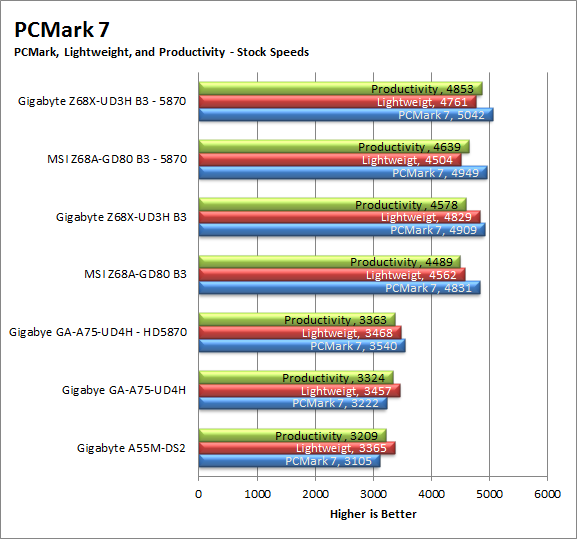
As you might have expected the PCMark 7 scores are at the bottom of the list. It is important to remember that this product also has the lowest combined cost of all of the other test systems. If you look at it in terms of performance vs. price it is not such a bad showing after all. 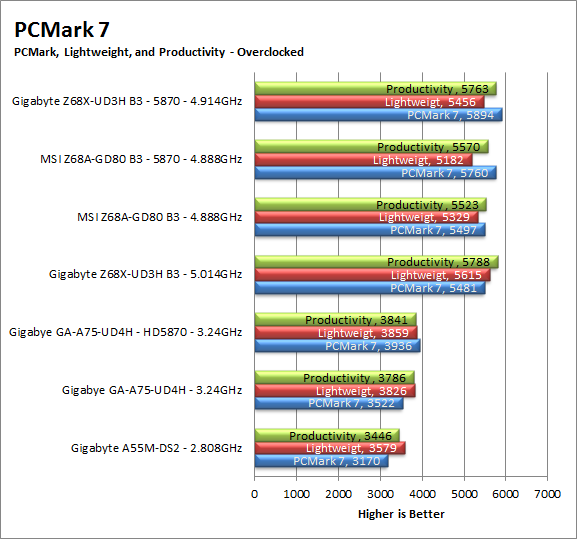
3DMark 11 -
3DMark 11 is the other Futuremark test that we run on our motherboards. This test simulates the typical tasks that a GPU (and system) would have to perform to provide you with a good gaming experience. It is based on the DX9, DX10 and DX11 engines but can only be installed on Windows Vista or later. The suite of tests covers DX9, DX10, and of course DX11 rendering; it also covers AI computations and physics. That’s right I said Physics the latest version of 3DMark uses a Havok physics engine. This removes the advantage that nVidia had with 3DMark Vantage. 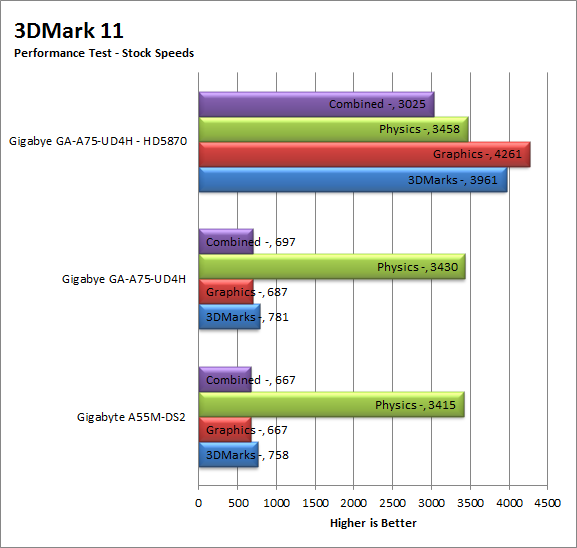
Again the 3DMark11 scores are low like the PCMark7 Scores. However, as we mentioned before this system also has the lowest cost. It is also not meant as a hardcore gaming platform. The simple fact that it is able to run 3DMark11 and bring in a score in the mid-600s is very good. Intel’s Sandy Bridge CPUs cannot even run DX11 yet. We will have to wait for Ivy Bridge for that feature. 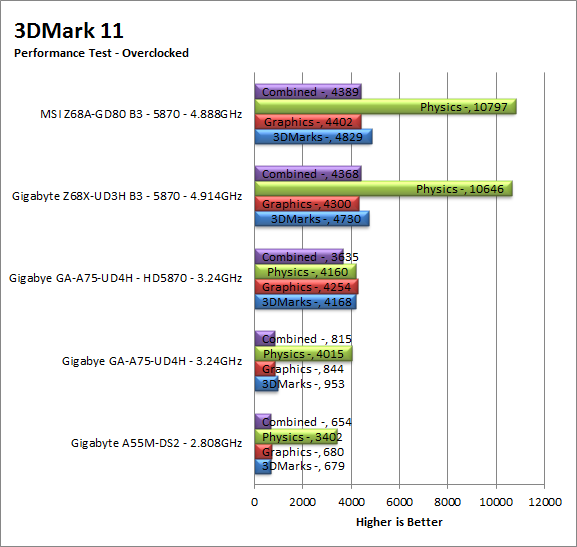
HyperPi 0.99b -
HyperPi is a front end application that allows you to easily run multiple instances of the SuperPi application. SuperPi, for those that are not familiar with it, is an application that measures the time it takes to calculate the number Pi out to as many as 32 million places. This calculation is then checked and run multiple times (up to 24 for a 32M run). This test stresses the CPU, Memory and HDD as data is handed off between the three. If there is a weak link, HyperPi will show it. For our testing we run the 32M test on as many cores (and threads) as the CPU has available. The slowest CPU time is then recorded. 
The HyperPi Scores were never going to be great. We knew this going into the testing because the scores on the A75 were also not outstanding. They are good for what you have (a small inexpensive CPU and motherboard), but you are not about to win any speed contests. Still we do know that the A55M-DS2 can crunch numbers for you, it is just going to take some time doing it.
Cinebench R11.5 -
Cinebench R11.5 is the 11th release of Maxon’s rendering test. This test is based off of the Cinema 4D engine, which is one of the industry standard tools for digital animation. It is a powerful product with many different modules that can be “plugged” into it to increase its effectiveness. With Cinebench you get to see how your computer would do using this application. There are two tests; one tests the CPU’s ability to render an image across multiple cores or threads. The other tests your systems ability to handle OpenGL based rendering. 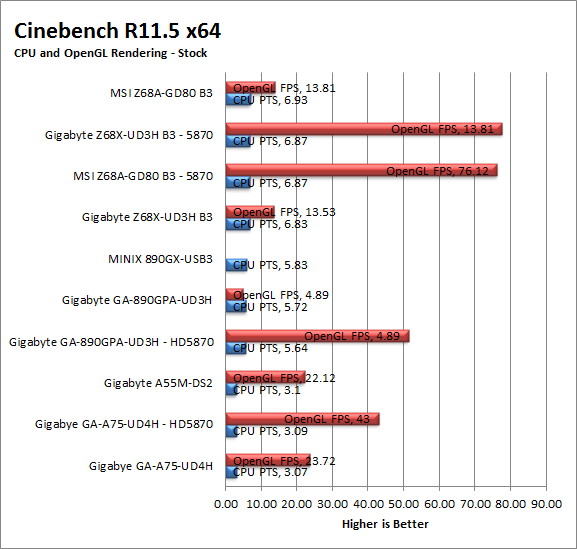
This is interesting; the A55M-DS2 is a little faster than the A75-UD4H when it comes to Cinebench R11.5. The speed difference is even more surprising considering that the A75 is faster in memory performance.
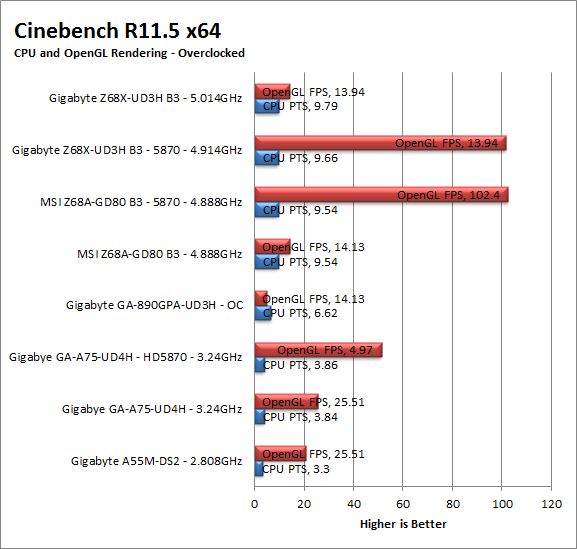

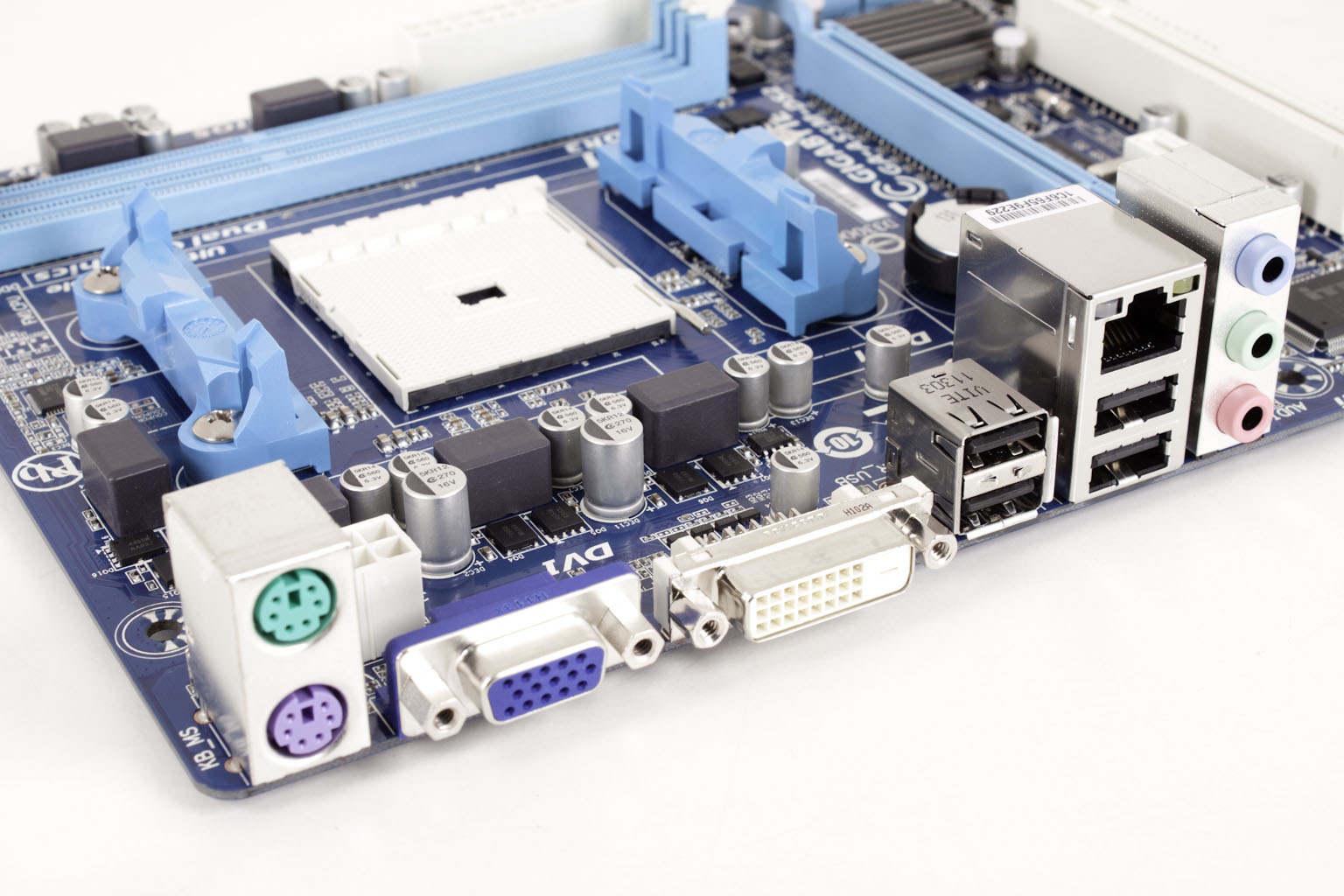 Although AMD’s future is far from certain we do know that they have been pushing towards lower power and lower cost devices. We have seen these in the form of their new APUs and their A75 and A55 chipsets. We have already tested the performance of the A75, now we are ready to take a look at the performance of one of the A55 based motherboards; the Gigabyte A55M-DS2. We have taken a look at the design choices and features so far and have come away with a bit of confusion as to where this product actually fits into the market. Now that we have put the board through our performance tests, let’s see if we can find out exactly where in the market the A66M-DS2 belong and if it is worth your time and money.
Although AMD’s future is far from certain we do know that they have been pushing towards lower power and lower cost devices. We have seen these in the form of their new APUs and their A75 and A55 chipsets. We have already tested the performance of the A75, now we are ready to take a look at the performance of one of the A55 based motherboards; the Gigabyte A55M-DS2. We have taken a look at the design choices and features so far and have come away with a bit of confusion as to where this product actually fits into the market. Now that we have put the board through our performance tests, let’s see if we can find out exactly where in the market the A66M-DS2 belong and if it is worth your time and money.

